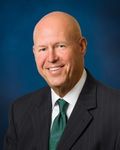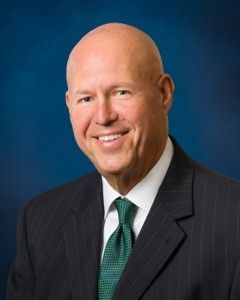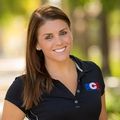Last week, Olympic and World Champion Simone Biles stuck the landing that matters most. Withdrawing from multiple Olympic events, the US gymnast sent a message to the world that body and mind are interdependent, and that wellness and fitness are best viewed through the lens of holistic health.
Ms. Biles described what occurred leading up to her decision, “I was just like shaking, could barely nap. I’ve just never felt like this going into a competition before. But then once I came out here, I was like no, mental is not there, so I just need to let the girls do it and focus on myself.” She added that, “…focusing on mental health is more prevalent in sports right now ... we have to protect our minds and our bodies and not just go out and do what the world wants us to do.”
It’s never been more apparent or trumpeted from a more prominent stage that whole people are in need of whole solutions. Holistic health is defined as an approach to health and optimal well-being that considers the whole person, emphasizing the connection of body, mind and spirit, while also considering how an individual interacts with his or her environment (American Council on Exercise, 2019).
With holistic health becoming a more widely used approach and organizations beginning to seek solutions to support the whole person, the door is swinging wide open for all ACE pros to gain opportunities to integrate into wellness teams. In fact, 92% of respondents to the 12th Annual Employer-sponsored Health and Well-being Survey expanded their support for programs addressing issues such as stress management, sleep improvement, and resiliency, as well as supporting mental health programs for dependent children. Budget dollars dedicated to corporate well-being programs is up, averaging $6 million, and for large employers (20,000-plus employees), the average budget has increased to $10.5 million. The opportunity to grow a thriving practice and empower people to achieve the change they seek has never been greater.
Simone Biles has brought us to what writer Malcolm Gladwell calls the tipping point: that magic moment when an idea, trend or social behavior crosses a threshold, tips and spreads like wildfire.
With that in mind, here are three ways you can enhance your ability to serve others and grow your practice as a health and exercise professional:
Shared Understanding
Knowledge of the language and fundamental positions commonly used by multidisciplinary wellness teams supporting a whole person client-centered approach increases your ability to add to the team or receive direct referrals. A great place to start is in becoming familiar with the biopsychosocial model in relation to the biomedical model. Consider how well your ACE certification(s), specializations and a preventive approach naturally align with the biopsychosocial model.
Get into Someone Else’s Shoes
Practicing empathy, which involves understanding another person’s experience by imagining yourself in that other person’s situation, is central to truly understanding a whole person. It takes the skill of empathy infused with non-judgement to begin the relationship and is required for it to thrive. Using empathy accurately requires practice and an ability to sense another person’s personal meanings as if they were your own. Some tools used to practice empathy are perspective taking, recognizing emotions and affirming communication. Using empathy accurately is valuable to what we do as health coaches and exercise professionals making it a prominent topic across all ACE’s certifications. Increase your understanding and practice of empathy through the newly launched Taking Action with ACE: Practicing Equity, Diversity and Inclusion as an Exercise Professional continuing education course (0.3 CECs) currently free to all ACE Certified professionals.
Know your ABCs
The ACE ABC Approach, which is an integral component of the ACE Mover Method, is a science-supported, client-centered approach to working with clients. It is founded on the belief that individuals are the foremost experts on themselves, and that leveraging powerful, open-ended questions and practicing active listening makes it possible to partner with clients to achieve the lifestyle changes they seek. This approach aligns with the definition of holistic health and the biopsychosocial method and relies heavily on both empathy and understanding things from the client’s perspective.
Let’s unite behind the courage of an Olympian and stand with her in proclaiming that the mind and body are connected, and that we must prepare to serve the whole person. The door has been opened; the tipping point has occurred—are you fully prepared to flourish and help others thrive? Will you view your future as a matter of chance or as a matter of choice? What actions will you take to prepare and propel yourself and those you have the privilege to serve into a brighter future?
Reference
American Council on Exercise (2019). The Professional’s Guide to Health and Wellness Coaching, American Council on Exercise.




 by
by 









 by
by